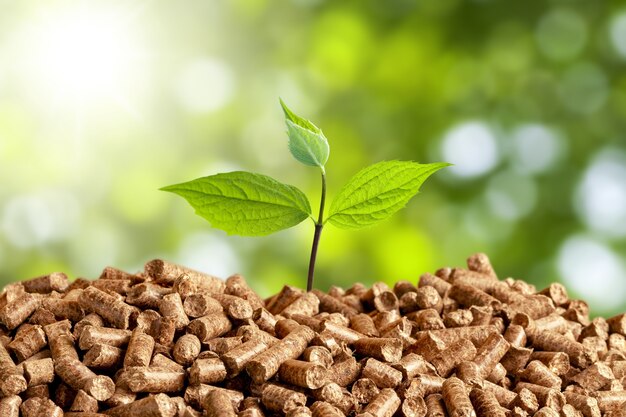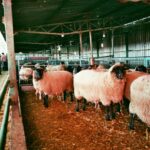Organic farming is gaining traction globally due to its focus on sustainability, soil health, and reduced environmental impact. A key component of organic farming is the use of organic fertilizers, which enhance soil fertility and provide essential nutrients for crops without relying on synthetic chemicals. Setting up an organic fertilizer system on your farm is a worthwhile investment that can improve productivity while promoting environmental conservation. Here’s a step-by-step guide to get you started.
1. Understand the Benefits of Organic Fertilizers
Before setting up your system, it’s important to recognize the advantages of organic fertilizers:
- They improve soil structure by increasing organic matter.
- They release nutrients gradually, ensuring long-term fertility.
- They enhance microbial activity in the soil.
- They reduce the risk of chemical runoff and pollution.
By embracing organic fertilizers, you’ll create healthier soils and grow nutrient-rich crops.
2. Assess Your Farm’s Needs
Every farm is unique, so start by assessing your soil type, nutrient deficiencies, and crop requirements. Conduct a soil test to determine the nutrient levels and pH. This information will help you identify the type of organic fertilizer your farm needs, whether it’s compost, manure, or green manure.
3. Select the Right Organic Fertilizer
Organic fertilizers come in various forms, including:
- Compost: Decomposed organic materials such as food scraps, crop residues, and animal waste.
- Animal Manure: Nutrient-rich waste from livestock, such as cows, chickens, or goats.
- Green Manure: Cover crops like legumes that are tilled into the soil to add nutrients.
- Bone Meal and Fish Emulsion: Excellent sources of phosphorus and nitrogen.
Choose the type that suits your farm’s specific needs and resources.
4. Set Up a Composting System
Composting is one of the easiest and most effective ways to produce organic fertilizer. Follow these steps to establish a composting system:
- Select a Location: Choose a site with good drainage and accessibility.
- Build a Compost Bin: Construct a bin or use a designated area to contain the compost.
- Layer Materials: Alternate layers of green materials (kitchen scraps, grass clippings) and brown materials (dry leaves, straw).
- Maintain Moisture: Keep the compost pile moist but not waterlogged.
- Turn the Pile: Aerate the compost regularly to speed up decomposition.
Within a few months, you’ll have nutrient-rich compost ready to apply to your fields.
5. Integrate Livestock Manure
If you raise livestock, their manure is an excellent resource for organic fertilizer. Ensure that the manure is well-aged or composted to prevent crop damage from high nitrogen levels. Spread it evenly across your fields or mix it into the soil to boost fertility.
6. Plant Green Manure Crops
Green manure crops like clover, alfalfa, or rye can be grown during off-seasons. These crops fix nitrogen in the soil, suppress weeds, and improve soil structure. Once matured, they are tilled back into the soil, enriching it with organic matter.
7. Set Up a Fertilizer Application System
Decide how you will apply the organic fertilizer to your fields. Options include:
- Broadcast Spreading: Manually or using spreaders to distribute fertilizer evenly.
- Drip Irrigation Systems: Combine water and liquid organic fertilizers for efficient application.
- Targeted Application: Apply fertilizers directly to plant roots for maximum efficiency.
Choose a method that fits the size of your farm and your crops’ needs.
8. Maintain Your Fertilizer System
To ensure the success of your organic fertilizer system, maintain it regularly by:
- Monitoring the composting process.
- Rotating green manure crops.
- Testing soil annually to track improvements and adjust fertilizer inputs accordingly.
Proper maintenance will keep your system efficient and your soil healthy.
9. Educate Yourself on Organic Standards
If you plan to market your produce as organic, ensure that your fertilizer system complies with local organic certification standards. Avoid using prohibited substances, and keep detailed records of your fertilizer inputs and farming practices.
10. Benefits Beyond the Farm
An organic fertilizer system doesn’t just benefit your crops—it also contributes to sustainable agriculture by:
- Reducing waste by recycling organic materials.
- Enhancing biodiversity in your soil.
- Protecting nearby water sources from chemical runoff.
Setting up an organic fertilizer system is a practical and sustainable step toward improving soil health and boosting farm productivity. By understanding your soil needs, selecting the right fertilizers, and maintaining the system, you can create a farming operation that is both productive and environmentally friendly. Over time, this approach will not only reduce costs but also contribute to the long-term success of your farm.
Join 'Farmers Mag' WhatsApp Channel
Get the latest Farming news and tips delivered straight to your WhatsApp
CLICK HERE TO JOIN






